Article begins
A stone rasps against a copper disk, a saw grates as it slices, a chisel chips in with percussive taps. Brows furrowed, heads slightly bent at an angle, three karigar (artisans) gather around spinning laps, gently shaping stones by rhythmically lowering them onto the whirring surfaces. The karigar are preparing an array of murky yet translucent yellowish-green stones of various shapes, in hues reminiscent of spring grass. As each piece hits the surface of the spinning lap, a hissing sound is emitted from contact between two exceptionally hard objects. They are peridots, but “rough” because they are yet to be cut or polished.
I have been visiting gem karkhanon (workshops) since 2017 to learn how rocks are transformed into gems. They are located primarily in two widely separated commercial areas in north and south Pakistan—Peshawar’s Namak Mandi and Karachi’s Saddar Bazaar. Gem production in these places is demanding on a manual, cognitive, and technical level. Although a gemstone is hard, when subjected to enough pressure it will break. Precision is key when manipulating these small objects of high value, especially in the absence of sophisticated technology. Only someone with several years of continuous practice, a network of customers, and the capital to purchase machinery or rent a workshop earns the title of ustad/ustaz (master in Urdu and Pashto).
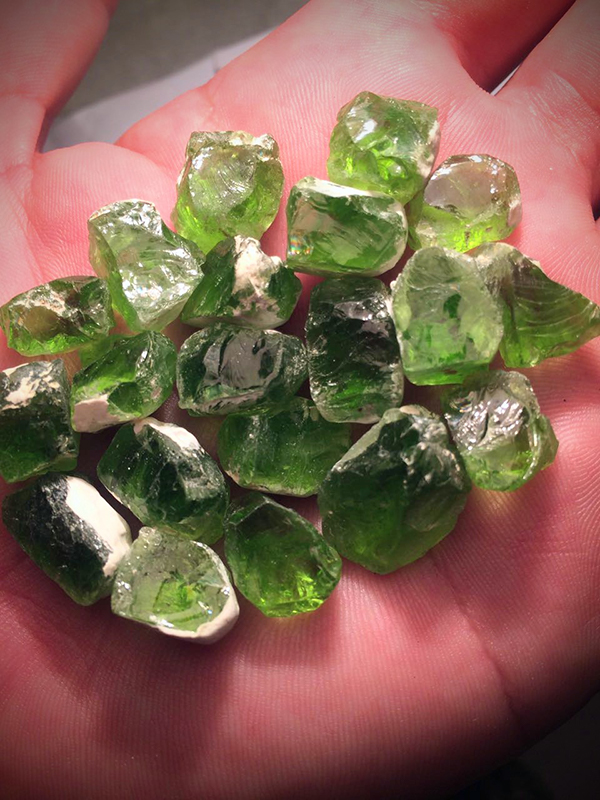
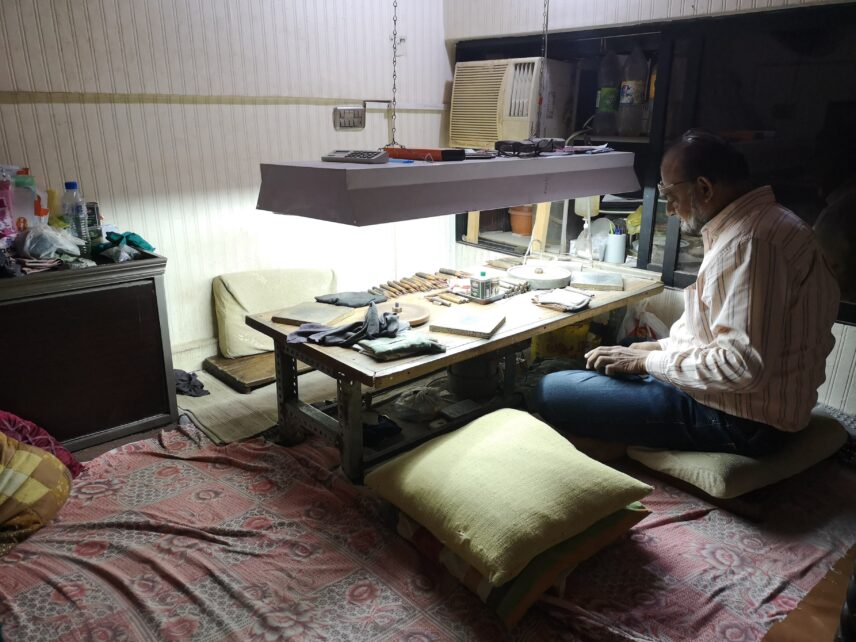
To sit with an artisan is to see a highly transformative, embodied form of value creation. Although gem cutting has definite conventions that vary by region and machinery, my teachers rarely offered verbal instructions on how to facet a stone. Instead, I learned by imitation. I observed the ustad and his apprentices (shagird) as they expertly shaped each stone into a dazzling combination of flat, reflective surfaces and sharp edges.
The rough stone is sliced using a mechanical saw in a way that prevents breakage and produces stones with more or less smooth surfaces. Water is used to keep the saw cool and combines with powdered rock particles to create a distinctive mist that leaves a streak of white residue on the skin. The stone is then clasped between two fingers and, in a step known as preforming, ground to the rough shape of the final gem on a coarse grinding wheel. Preforming a high-value stone is no small feat. This is also where the requisite skills of an artisan come to light: observation, dexterity, and an understanding of the quality of stone. Some might call it simply a stone’s hardness. More than that, it is about the way an object breaks when cut, the knowledge of which is gained through tactile experience. Crystals, unlike ordinary stones, can break along certain lines—this is also known as cleavage. By finding and grinding the “table,” the largest and most visible surface of the gem, a skilled preformer can make an important assessment of how the rest of the gem will be cut, removing cracks and inclusions that would make the final gem less clean. The work is not only a matter of skill; it requires long, sustained concentration.
The preformed stone is then fixed to a dop stick using melted wax. The smell of the kerosene lamp often overpowers all other scents in the production process. The dop stick is fitted into a faceting handpiece called the angoora. Outside South Asia, an angoora usually comes with index gears, angle settings, and other tools that allow the cutter to find the correct angle and place facets accordingly. But in Namak Mandi, as in other places in the Indian subcontinent, most cutters I know are capable of preforming, faceting, and polishing without such mechanical aids. It is what makes their artisanship distinctive and intuitive. Finally, the meticulous work of faceting begins.
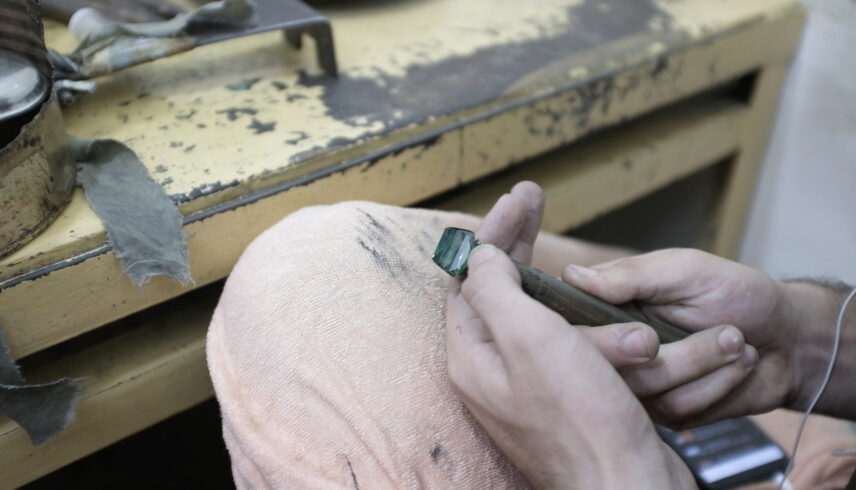
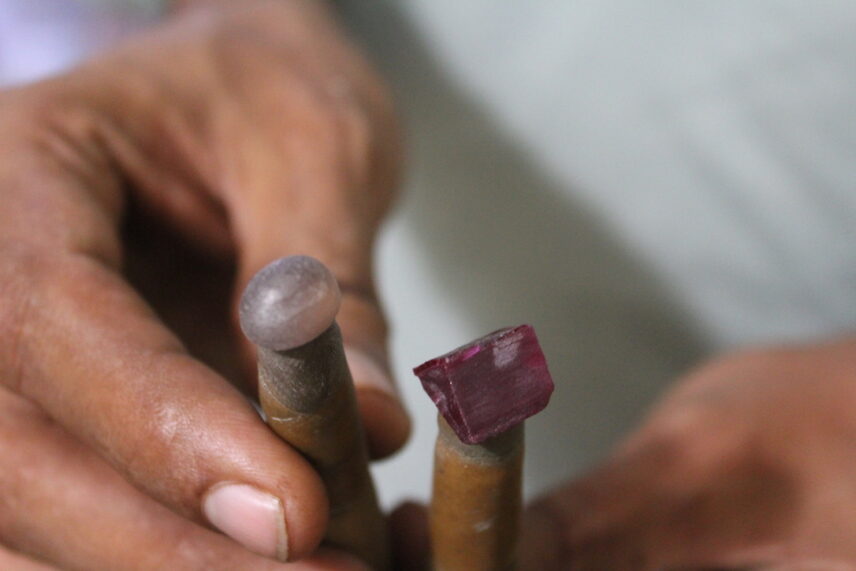
Keen eyes and steady hands patiently render each stone into a gem. Aesthetics and geometry stand united. Gripping the angoora, the karigar gently touches the stone to the revolving lap, producing a host of facets from the largest to the smallest and most intricate. Steady hands, a fine eye for minute detail, and an understanding of the hardness of the stone enable the artisan to produce the smallest of facets on a stone—sometimes as tiny as one-fifth of a fingertip—without breaking it. From time to time, the cutting lap is turned off, leaving a whiff of overworked motor, as artisans dip their finger into a concoction of oil and diamond powder and rub it against their lap to enhance the polishing process.
Unpredictable electricity supplies frequently interrupt proceedings (load-shedding is common), turning lamps off and bringing faceting machines to a standstill. These disruptions add to the already long and labor-intensive process through which nondescript rocks are worked into lustrous gems.
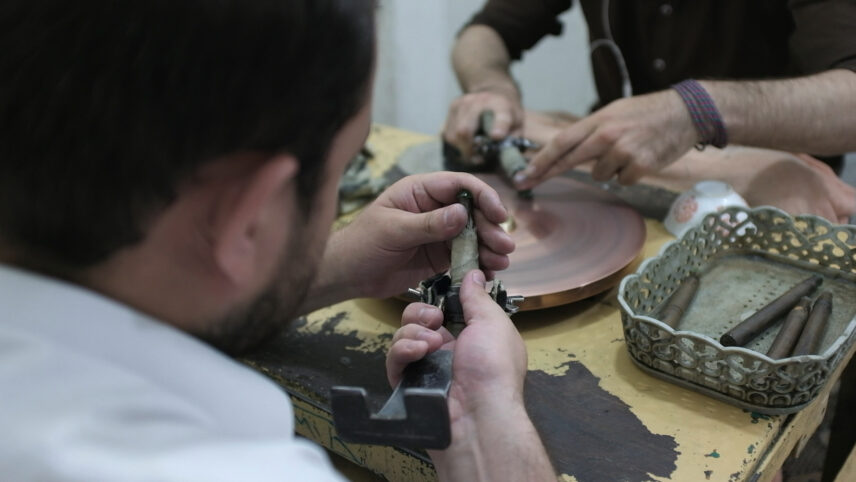
Although the creation of luminous beautiful objects such as gems reflects the patience, skill, and labor of timework artisans, once on the market the stones are ascribed value according to their physical qualities. Artisans are not paid for producing unique gems of individual brilliance, so work to produce quantity to cater to the contemporary market’s demand for calibrated gemstones. The products of their hard work emerge as a gleaming, liberated commodity, cut for standard-sized jewelry settings, polished up for brilliant adornment.
Yet what of the artisans themselves, laboring to produce these objects of human desire? The skilled manual practitioners who worked at perfecting each angle, facet, and form of a gem, remain invisible in the realm of consumption. What is seen is an emotionally desirable, status-enhancing, and not especially useful commodity.
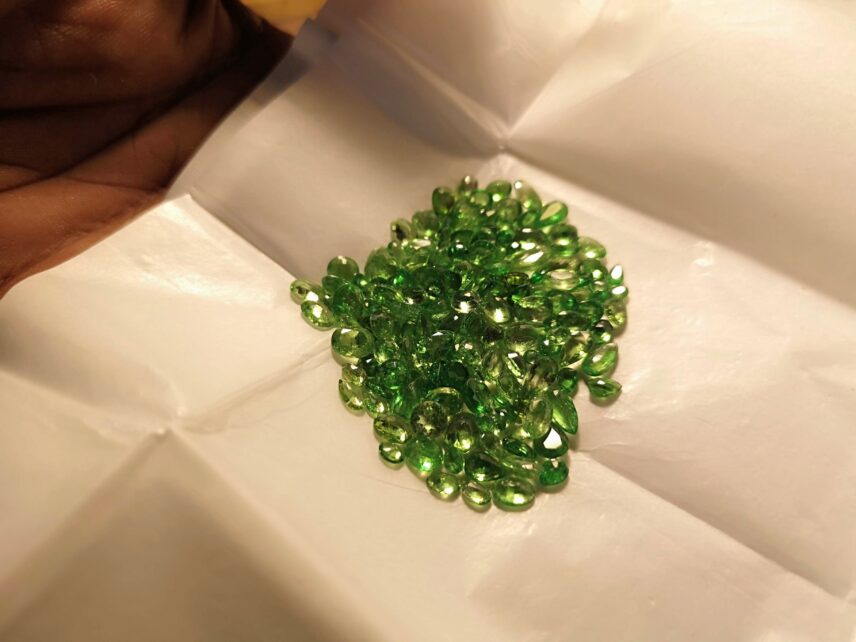
A Pashto saying—da ustaaz laas ki kamaal da, chi kom siz la laas wururi hagha zar shi (whatever the master’s hand touches turns to gold)—reminds us that to be an artisan laboring within a modern capitalist economy is a blessing and a curse. Our preoccupation with inanimate things misses the labor and talent of the worker, without whose touch a jewel remains but a rock or stone.

